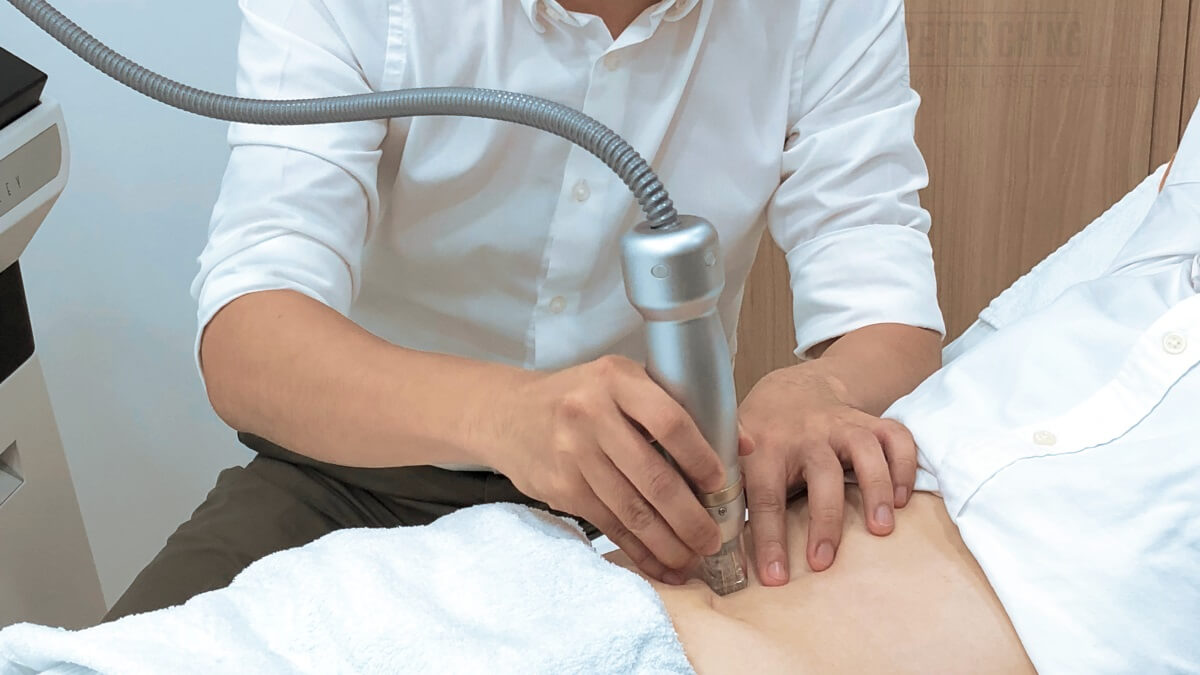Platelet Rich Plasma (PRP)

What is PRP?
Platelet Rich Plasma, or PRP in short, is also known as a vampire facelift. This is because after doing a PRP treatment, your face will have some bloodstains (which will fade away), looking like your hand just survived a vampire attack.
The PRP procedure is done by drawing the patient's blood and having the blood processed to get the top layer of the blood which contains the PRP that we are looking for. This PRP has a growth factor, so it helps to rejuvenate the skin, and can also help in hair growth.
How we do PRP
After the blood has been drawn, it is placed in a specific PRP test tube which is sterile. After the blood components have been separated, the PRP from the blood is injected into the treatment area.
Dr Peter or Dr Loo will usually apply numbing cream on your face or scalp before multiple injections into the treatment area using very small needles.
After the procedure, you can expect to have some minimal crust over the treatment area or the injection site, which will peel off by itself after 1 or 2 days. Certain areas may also have tiny little bruises at the injection site which will fade away after the treatment.
What to watch out for
When we carry out a PRP procedure with Dr Peter and Dr Loo here, the blood drawn during the PRP procedure is placed in a specific PRP test tube which is sterile. Some clinics use normal test tubes meant for blood tests, which is not right because these test tubes are not sterile, and in specific PRP test tubes, there are specific substances present to help separate the PRP from other blood cells in the blood more effectively.
The injection level during the procedure is also very important, we want to inject into the middle layer of the skin, which is the dermis, for the most effective result, not too deep and not too shallow.
So always make sure that you put safety and effectiveness your top priority when it comes to getting your PRP treatment.
To enquire more about Platelet Rich Plasma (PRP), contact us or book an appointment here!
This treatment can treat the following conditions:

Wrinkles
Wrinkles are caused by the loss of moisture and the decreasing collagen production in our skin as we age. It is a natural aging sign but can be treated with the right treatments.

Hair Loss
Hair loss is a common problem for both men and women, and can be caused by aging, genetics, diet, hormones, or skin infections and medications. However, there are indeed treatments for hair loss. And unlike any treatments, dermatological treatments give you safe and effective solutions.

Sagging Skin (Face)
Sagging skin can be caused by genetics, skin damage from sunlight, lifestyle habits like smoking and alcohol consumption, and a lack of skin care. Of course, sagging skin can be treated with medical procedures and also anti-aging steps and efforts.

Scars and Keloids
Scars and keloids are caused by an overgrowth of tissues that usually develops during our skin healing process. They are usually red or purple in colour and have the appearance of a raised scar.
Dark Circles and Eye Bags
Dark circles under the eyes are caused by the darkened tissues and blood vessels beneath the skin at the eye area, and is usually a sign of lack of sleep. But eye bags, on the other hand, appear when the tissues and muscles around your eyes weaken and loosen due to skin aging. Topical cream are usually only effective in preventing eye bags, but if you already have eye bags, proper medical treatments are needed to get rid of them.
Stretch Marks
Stretch marks appear due to a breakage in the middle layer of our skin, usually due to sudden weight gains or sudden growths. These can also be influenced by hormones and certain medications. Stretch marks can appear anywhere where the skin has been stretched, but they usually affect areas where fat is stored, such as the tummy, breasts, upper arms, buttocks, thighs and shoulders. To treat these skin conditions, laser treatments are usually used.
Related treatments and services:

Chemical Peel
Chemical peels are acids that are applied on the skin to cause the skin to peel. This process stimulates the skin cells to regenerate faster and thus fastening the process of skin healing.
Filler / BOTOX Injection
Fillers like hyaluronic acid filler can be used to fill in the spaces in the skin where fat had been lost (the cause of the skin to sag) and volumize the skin to make it tight.

Ultherapy
Ultherapy is a medical treatment that uses HIFU (High Intensity Focused Ultrasound)to detect areas where sagging skin is present and lift the skin to tighten it without any invasive surgery.

Laser Genesis
Laser genesis is a laser treatment that is non-invasive, that is, no surgery is involved. The heat from the laser penetrates our body and stimulates collagen growth, filling in the collagen loss due to the aging process.

Radio Frequency Treatment
Radio frequency treatment uses radio frequency energy to penetrate the layers of the skin to treat various skin conditions like acne, sagging skin, and body fat elimination.
Laser Treatment for Stretch Marks
Stretch marks can appear anywhere where the skin has been stretched, but they usually affect areas where fat is stored, such as the tummy, breasts, upper arms, buttocks, thighs and shoulders. Honestly, it is actually impossible for our skin to return to its original condition once we develop stretch marks, but we can improve the condition via laser treatments.
